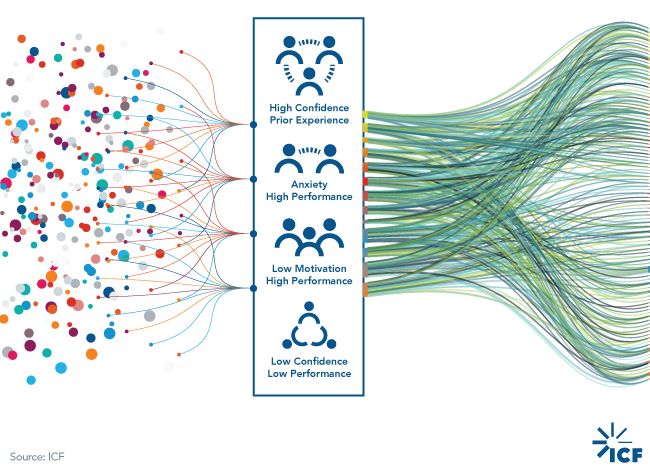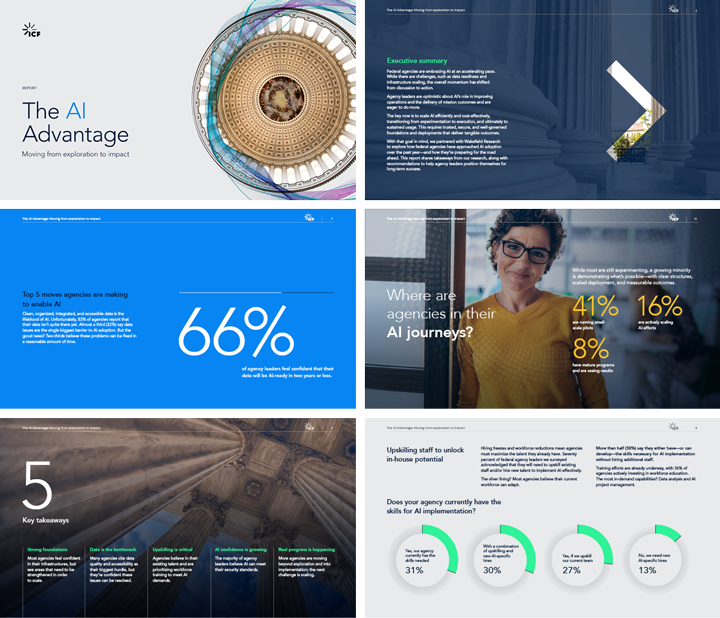
The next frontier for federal workforce automation is personalized learning
Federal workforce automation requires employees to complete digital curriculum, but not everyone passes with flying colors. Personalized learning can help workers overcome their individual roadblocks.
Does this statement sound familiar? “I would love to learn more about [artificial intelligence/blockchain/cybersecurity/etc.], so I’m going to sign up for one of the thousands of free online courses.”
Later that weekend, you find that learning to code from scratch, remembering your grad school statistics, or any other forgotten technical field feels frustrating and, you have yet to pick up any practical skills. This kind of experience helps explain why completion rates for these online courses hover around 10%.
For the federal workforce, achieving the presidential management agenda goals to modernize government means finding a better way to acquire these kinds of skills, propelling digital transformation efforts quickly and effectively. Federal employees know why this is important—97% of workers polled in ICF’s 2018 federal digital trends survey said that they “agree strongly” or “somewhat” that government agencies have a responsibility to provide digital tools and services that make a positive difference in citizens’ lives.
Fortunately, emerging methods for personalized learning make federal workforce automation easier to accomplish than ever.
Recently published research by ICF and the Army Research Laboratory sheds light on modern techniques for effective personalization. The study examines a variety of methods for more personalized learning, from early warning systems that identify at-risk learners employed today in top universities to social network analysis to help identify isolated students and make connections. One method, in particular, can help solve these problems: so-called “clustering” can be used to visualize segments and develop a richer understanding of their experiences.
Data-driven learner personas
Modern marketing and web design approaches include analyzing market segments and developing what is referred to as “user personas.” Personas consist of groups of users that share common characteristics and often apply labels such as “retirees on a fixed income” or “first-year college students” and help to create more personalized and engaging sales campaigns.
ICF uses these same techniques to create more engaging experiences through workshops and facilitated dialogues, which identify learner personas and more customized learning approaches. These personas help develop a tailored learning experience or build separate offerings and pathways that reach individual segments. While methods for market segmentation and tailored learning experiences are not themselves novel, advances in automation make their application faster and more accessible.
A recent research project for the Army Research Laboratory’s Human Research and Engineering Directorate explored how to automate this process through dashboards for instructors. The study examined how to synthesize biometric sensor data (such as heart rate and respiration), affective variables (such as motivation and anxiety), and more traditional data sources (such as performance on assessments).

Automated data feeds create a data sandbox for analysis. Unsupervised learning generates persona segments for analysis.
To accomplish this research, the team experimented with several popular methods for what’s known as “unsupervised learning,” using automated processes to find patterns existing within a data set.
In smaller classroom settings with a handful of students, instructors can conduct this same kind of process intuitively based on their experience with the classroom. Shy students sit in the back row, so you ask them questions to draw them out, and you try not to let the eager achievers in the front of the class dominate the discussion. These analytic methods shine in complex environments with hundreds of variables and thousands of learners—patterns can be identified on a scale that humans cannot accomplish on their own.
What do I do with these personas?
Importantly, the methods described here can be applied today to real-world problems, such as how to more rapidly develop the technical skill sets required for an agency’s digital transformation. Identifying and labeling personas through analytics are just the first steps towards actionable insights. Once you have defined the learner personas that exist in your data, they can provide immediate value to a number of stakeholders.
Here are just a few example use cases for applying personas:
- Learner scaffolding—Detecting common characteristics of students who quit early, like those taking online data science programs, can reveal patterns and help predict who is going struggle. Intervention can then occur earlier with more targeted learning opportunities, such as remedial programming skills or even recommending a different course.
- At-risk students—The use of predictive analytics has started to take hold in the higher education community, based in part on the dramatic improvements to retention at Georgia State University. Personas can be used to identify patterns and trends of students who drop out, then predict which students will end up in the at-risk category before it is too late.
- Rapid advancement—On the other end of the spectrum, you may find a significant number of learners that are completing the course rapidly with excellent scores.
- Anomaly detection—Unsupervised learning methods are also excellent for identifying “rare patterns” in the data, which can be useful if there is a suspicion that learners are skirting the rules.
Why now?
While many of the methods fueling the recent advances in artificial intelligence and machine learning have been around for decades, they have never been so scalable, efficient, and accessible. Capabilities such as robotic process automation can be taught quickly and easily online and can dramatically reduce the time needed to collect and process data.
These capabilities are being applied to all manner of government challenges, such as a recent case study on contract closeout demonstrated. Thus, federal workforce automation is within close reach.
Tools like learner personas provide immediate benefits and form the foundation for complex analytic techniques and performance enhancement. Personas demonstrate one such use case for achieving personalized learning at scale, but there are many others. Your agency’s data may hold all kinds of hidden gems to facilitate employee training.
